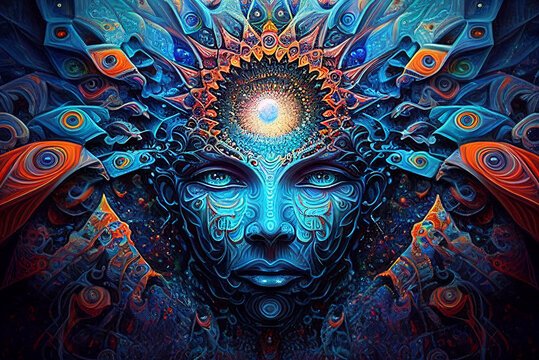Introduction
Dimethyltryptamine (DMT) is a powerful psychedelic substance found naturally in various plants and animals. It has been used for centuries in traditional Amazonian shamanic practices and has gained popularity in recent years for its profound and often transformative experiences. Despite its potential benefits, DMT use can also lead to significant challenges and risks. In this comprehensive article, we will explore what DMT is, why people start using it, how its use progresses, the consequences of its use, and potential solutions for those struggling with DMT-related issues.

What Is DMT?
DMT is a naturally occurring tryptamine compound structurally similar to the neurotransmitter serotonin. It is known for producing intense and short-lived hallucinogenic experiences. When ingested, DMT can cause vivid visual and auditory hallucinations, altered perceptions of time and space, and deep, often spiritual, insights. It is commonly found in the following forms:
Natural Sources: DMT is present in various plants, such as Psychotria viridis and Diplopterys cabrerana, which are used in traditional ayahuasca brews.
Synthetic DMT: DMT can also be synthesized in laboratories for research purposes or recreational use.
Ayahuasca: A traditional Amazonian brew combining DMT-containing plants with MAO inhibitors to prolong its effects.

Why People Start Using DMT
The reasons people begin using DMT can vary widely, but common motivations include:
Spiritual Exploration: Many users seek profound spiritual or mystical experiences, hoping to gain insights or connect with a higher consciousness.
Curiosity: The intense and unique nature of DMT experiences piques the curiosity of those interested in psychedelics.
Therapeutic Potential: Some individuals use DMT to explore its potential for treating mental health issues, such as depression, anxiety, and PTSD.
Peer Influence: Social circles and peer pressure can also play a role in initiating DMT use.
How Its Use Progresses
DMT use can progress in various ways, depending on individual experiences and motivations. The progression typically involves:
Initial Use: The first experiences with DMT are often highly impactful, leaving users with a desire to explore further.
Increased Frequency: Some users may begin using DMT more frequently to recapture the intensity of their initial experiences.
Integration Challenges: The profound nature of DMT experiences can make it difficult for some users to integrate these insights into their daily lives.
Dependence: While not physically addictive, some individuals may develop a psychological dependence on the profound experiences DMT offers.

Why People Start Using DMT
The reasons people begin using DMT can vary widely, but common motivations include:
Spiritual Exploration: Many users seek profound spiritual or mystical experiences, hoping to gain insights or connect with a higher consciousness.
Curiosity: The intense and unique nature of DMT experiences piques the curiosity of those interested in psychedelics.
Therapeutic Potential: Some individuals use DMT to explore its potential for treating mental health issues, such as depression, anxiety, and PTSD.
Peer Influence: Social circles and peer pressure can also play a role in initiating DMT use.
How Its Use Progresses
DMT use can progress in various ways, depending on individual experiences and motivations. The progression typically involves:
Initial Use: The first experiences with DMT are often highly impactful, leaving users with a desire to explore further.
Increased Frequency: Some users may begin using DMT more frequently to recapture the intensity of their initial experiences.
Integration Challenges: The profound nature of DMT experiences can make it difficult for some users to integrate these insights into their daily lives.
Dependence: While not physically addictive, some individuals may develop a psychological dependence on the profound experiences DMT offers.